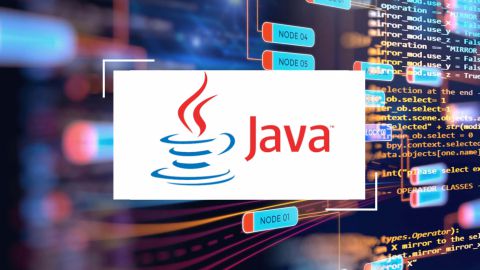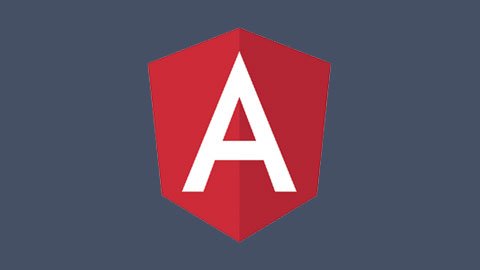What you'll get
- Job Credibility
- Certification Valid for Life
- Live Classes
- Certificate of Completion
Exam details
- Mode of Exam : Online
- Duration : 1 Hour
- Multiple Choice Questions are asked
- No. of Questions are asked : 50
- Passing Marks : 25 (50%)
- There is no negative marking
Are you finding the best Node.Js online course to become a Node.Js developer? Welcome to this online course, which deals with server-side theories and concepts. In this course, you will understand the fundamentals of Node.Js from the beginning. So if you are a complete newbie or have a basic understanding of programming language, then also you will not have any difficulties during the program. If you will face any doubt, then the expert will solve that as well.
Why should you learn Node.Js?
Nowadays, Node.Js is fastly growing in the industry of web server technology. Node developers are one of the highest paid developer because with this web server facility they can build a reliable, smooth and high-quality web application.
What will you learn in this online Node.Js training?
- Installation of Node.Js IDE & NPM
- Explore modern concepts of JavaScript
- Understanding Node.Js event loop
- Asynchronous and Synchronous function
- HTTP response codes
- Learning CSS, HTTP, JavaScript, and Git
- Building web developing path
- Building light and fast application
- Working with data and testing of data
- Start Using MongoDB with Node.Js
- Templating and many more things will be taught.
This course will help you understand crucial concepts of Node practically and you will have detailed examples of building websites, microservices and APIs. After this online program you can opt for full stack web or API developer, or start your career in development of mobile or web applications.
Course Content
-
Section Intro: Installing and Exploring Node.js
-
Installing Node.js and Visual Studio Code
-
What is Node.js?
-
Why Should I Use Node.js?
-
Your First Node.js Script
-
Section Intro: Node.js Module System
-
Importing Node.js Core Modules
-
Importing Your Own Files
-
Importing npm Modules
-
Printing in Color
-
Global npm Modules and nodemon
-
File System and Command Line Args (Notes App)
-
Section Intro: File System and Command Line Args
-
Getting Input from Users
-
Argument Parsing with Yargs: Part I
-
Argument Parsing with Yargs: Part II
-
Storing Data with JSON
-
Adding a Note
-
Removing a Note
-
ES6 Aside: Arrow Functions
-
Refactoring to Use Arrow Functions
-
Listing Notes
-
Reading a Note
-
Section Intro: Debugging Node.js
-
Debugging Node.js
-
Error Messages
-
Section Intro: Asynchronous Node.js
-
Asynchronous Basics
-
Call Stack, Callback Queue, and Event Loop
-
Making HTTP Requests
-
Customizing HTTP Requests
-
An HTTP Request Challenge
-
Handling Errors
-
The Callback Function
-
Callback Abstraction
-
Callback Abstraction Challenge
-
Callback Chaining
-
ES6 Aside: Object Property Shorthand and Destructuring
-
Destructuring and Property Shorthand Challenge
-
Bonus: HTTP Requests Without a Library
-
Section Intro: Web Servers
-
Hello Express!
-
Serving up HTML and JSON
-
Serving up Static Assets
-
Serving up CSS, JS, Images, and More
-
Dynamic Pages with Templating
-
Customizing the Views Directory
-
Advanced Templating
-
404 Pages
-
Styling the Application: Part I
-
Styling the Application: Part II
-
Section Intro: Accessing API from Browser
-
The Query String
-
Building a JSON HTTP Endpoint
-
ES6 Aside: Default Function Parameters
-
Browser HTTP Requests with Fetch
-
Creating a Search Form
-
Wiring up the User Interface
-
Section Intro: Application Deployment
-
Joining Heroku and GitHub
-
Version Control with Git
-
Exploring Git
-
Integrating Git
-
Setting up SSH Keys
-
Pushing Code to GitHub
-
Deploying Node.js to Heroku
-
New Feature Deployment Workflow
-
Avoiding Global Modules
-
Section Intro: Databases and Advanced Asynchronous Development
-
MongoDB and NoSQL Databases
-
Installing MongoDB on macOS and Linux
-
Installing MongoDB on Windows
-
Installing Database GUI Viewer
-
Connecting and Inserting Documents
-
Inserting Documents
-
The ObjectID
-
Querying Documents
-
Promises
-
Updating Documents
-
Deleting Documents
-
Section Intro: REST APIs and Mongoose
-
Setting up Mongoose
-
Creating a Mongoose Model
-
Data Validation and Sanitization: Part I
-
Data Validation and Sanitization: Part II
-
Structuring a REST API
-
Installing Postman
-
Resource Creation Endpoints: Part I
-
Resource Creation Endpoints: Part II
-
Resource Reading Endpoints: Part I
-
Resource Reading Endpoints: Part II
-
Promise Chaining
-
Promise Chaining Challenge
-
Async/Await
-
Async/Await: Part II
-
Integrating Async/Await
-
Resource Updating Endpoints: Part I
-
Resource Updating Endpoints: Part II
-
Resource Deleting Endpoints
-
Separate Route Files
-
Section Intro: API Authentication and Security
-
Securely Storing Passwords: Part I
-
Securely Storing Passwords: Part II
-
Logging in Users
-
JSON Web Tokens
-
Generating Authentication Tokens
-
Express Middleware
-
Accepting Authentication Tokens
-
Advanced Postman
-
Logging Out
-
Hiding Private Data
-
Authenticating User Endpoints
-
The User/Task Relationship
-
Authenticating Task Endpoints
-
The User/Task Relationship
-
Section Intro: Sorting, Pagination, and Filtering
-
Working with Timestamps
-
Filtering Data
-
Paginating Data
-
Sorting Data
-
Section Intro: File Uploads
-
Adding Support for File Uploads
-
Validating File Uploads
-
Validation Challenge
-
Handling Express Errors
-
Adding Images to User Profile
-
Serving up Files
-
Auto-Cropping and Image Formatting
-
Section Intro: Sending Emails
-
Exploring SendGrid
-
Sending Welcome and Cancelation Emails
-
Environment Variables
-
Creating a Production MongoDB Database
-
Heroku Deployment
-
Section Intro: Testing Node.js
-
Jest Testing Framework
-
Writing Tests and Assertions
-
Writing Your Own Tests
-
Testing Asynchronous Code
-
Testing an Express Application: Part I
-
Testing an Express Application: Part II
-
Jest Setup and Teardown
-
Testing with Authentication
-
Advanced Assertions
-
Mocking Libraries
-
Wrapping up User Tests
-
Setup Task Test Suite
-
Testing with Task Data
-
Real-Time Web Applications with Socket.io (Chat App)
-
Section Intro: Real-Time Web Applications with Socket.io
-
Creating the Chat App Project
-
WebSockets
-
Getting Started with Socket.io
-
Socket.io Events
-
Socket.io Events Challenge
-
Broadcasting Events
-
Sharing Your Location
-
Event Acknowledgements
-
Form and Button States
-
Rendering Messages
-
Rendering Location Messages
-
Working with Time
-
Timestamps for Location Messages
-
Styling the Chat App
-
Join Page
-
Socket.io Rooms
-
Storing Users: Part I
-
Storing Users: Part II
-
Tracking Users Joining and Leaving
-
Sending Messages to Rooms
-
Rendering User List
-
Automatic Scrolling
-
Deploying the Chat Application


-480x270.jpg)
